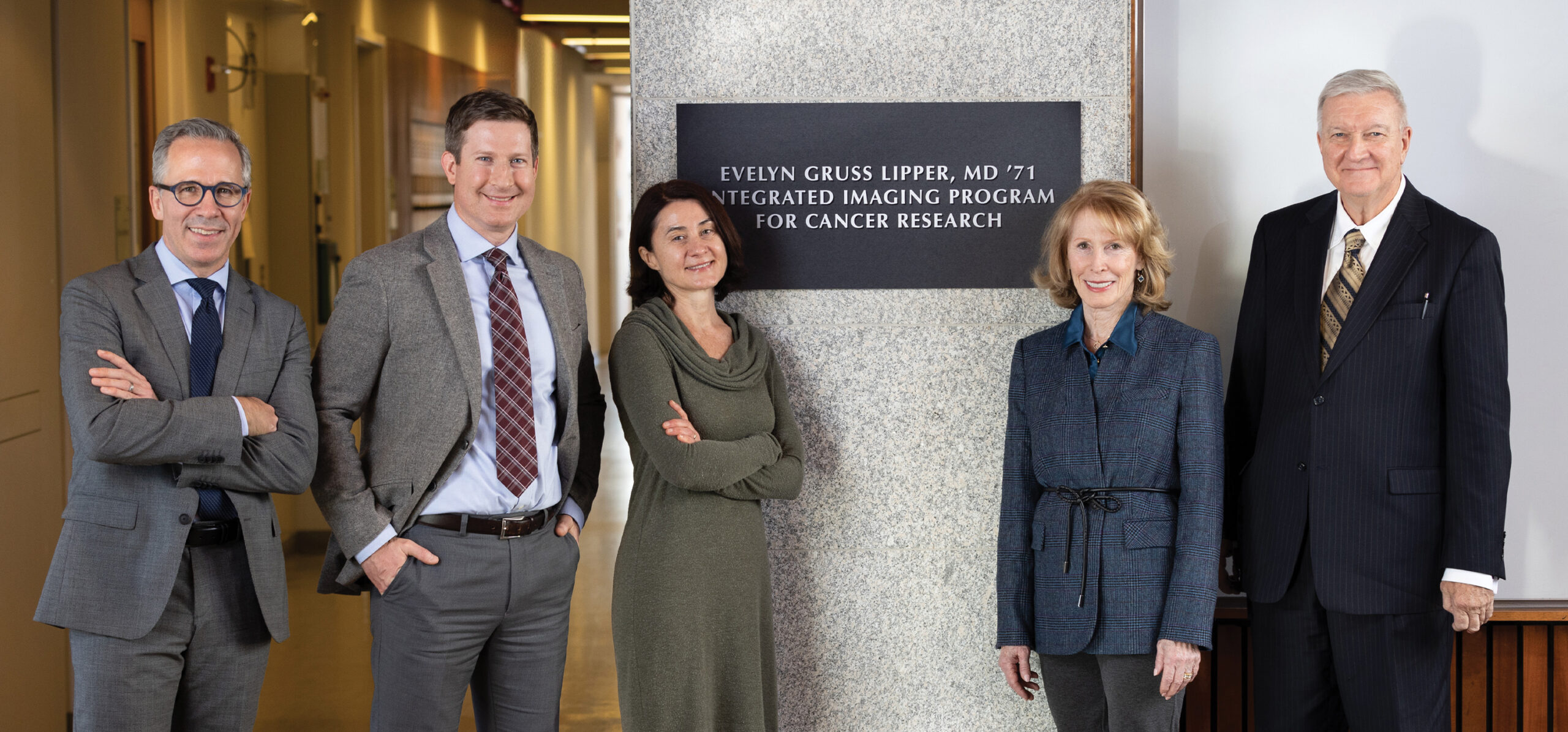
Over the last two decades, gifts from Evelyn Gruss Lipper, M.D. ’71, have helped make the College of Medicine a leader in using advanced imaging to study how complex diseases get started and progress in the human body.
Now Dr. Lipper’s family philanthropy, the EGL Charitable Foundation, has made a major new gift to create Einstein’s Integrated Imaging Program for Cancer Research (IIPCR). The gift will help investigators at Einstein and Montefiore Einstein Cancer Center translate their laboratory research findings into clinical tools for diagnosing and treating metastatic cancers (in which tumor cells have spread beyond the primary tumor).
“Dr. Lipper’s visionary generosity provides a path for bringing basic-science advances to bear on intractable disease,” says Gordon F. Tomaselli, M.D., the Marilyn and Stanley M. Katz Dean at Einstein and executive vice president and chief academic officer at Montefiore. “With her support, promising Einstein discoveries will be transformed into effective treatments, with the goal of improving cancer care.”
When Dr. Lipper decided to support research at her alma mater, she focused on imaging—a decision influenced by her own professional experience as well as by her interest in the use of new technology to improve health outcomes. “In science, observation is critical to understanding,” she says. “I took up that theme and went with it.”
Dr. Lipper’s initial gift to Einstein, in 2000, was instrumental in establishing the Gruss Magnetic Resonance Research Center (MRRC). Einstein scientists could now use magnetic resonance imaging (MRI)—a noninvasive imaging tool involving powerful magnets and radio waves—to open a window onto metabolism, structure, and function.
It soon became clear that recent advances in the field of biophotonics could complement and expand upon MRI findings by attaining much higher resolution than was possible with MRI alone. Biophotonics uses photons (light particles) to examine and manipulate living systems, allowing insights at the molecular level into cell function in health and disease. The potential of biophotonics as an imaging tool inspired Dr. Lipper to make a second major gift to Einstein, establishing the Gruss Lipper Biophotonics Center (GLBC) in 2006.
“To take this work to the next level, we really needed to combine MRI with multiphoton optical imaging—which would require a substantial investment in equipment and personnel,” says John Condeelis, Ph.D., the Judith and Burton P. Resnick Chair in Translational Research, professor of cell biology and of surgery, scientific director of the Analytical Imaging Facility, and chair emeritus of anatomy and structural biology at Einstein.
In 2012, responding to the need, the EGL Charitable Foundation provided funds to establish Einstein’s Integrated Imaging Program (IIP), co-directed by Dr. Condeelis, Robert Singer, Ph.D., and Craig Branch, Ph.D.
Over the years, the IIP spurred numerous advances, particularly in understanding how breast cancer cells spread to distant organs, and it achieved its aim of encouraging research collaborations between the MRRC and the GLBC. By the end of 2021, it became clear that something else was needed: a way to move basic-science discoveries into the clinic.
[Dr. Lipper] is a shining example of how the combined efforts of our research and philanthropic communities can address major healthcare challenges and ultimately improve the health of our community.
— Dr. John Condeelis
The EGL Charitable Foundation stepped in once again, providing funds to create Einstein’s IIPCR, which will open later this year under the direction of Dr. Condeelis. This latest gift will expand the imaging team’s research portfolio to include lung and pancreatic cancers and involve investigators from fields including radiology, oncology, surgery, pathology, veterinary medicine, and epidemiology.
“Dr. Lipper’s extraordinary vision, persistence, and generosity are an inspiration to all of us in the translational research community,” says Dr. Condeelis. “She’s a shining example of how the combined efforts of our research and philanthropic communities can address major healthcare challenges and ultimately improve the health of our community.”
Adds Dr. Lipper, “Perhaps the most important lesson I’ve learned as a philanthropist is that it’s not simply a matter of giving money away. You want to give it effectively and make an impact. What could be better than advancing medical technologies that improve people’s health?”